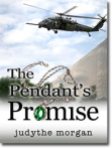Nothing is more exciting than seeing your name on the cover of a book you’ve written. You’ve devoted hours and hours to the creation of your “baby.” Holding that book in your hand or seeing the listing on an ebook seller site validates your hard work.
I still get excited when I hold my debut novel in my hand.

But what can a reader expect to find inside when they see your name on the book cover?
Authors aren’t products like Pepsi or Coke, but readers do develop expectations about the content of novels based on author brand. For example, what do you expect from books by Mark Twain, or Stephen King, or J.K. Rowling?
Me, I expect a southern tale from Mark Twain, a horror tale from Stephen King, fantasy and magic from a J.K. Rowling book and find exactly that.
My TBR (to be read) pile is filled with all genres. On close examination, the highest stack is romance/women’s fiction books by authors like Debbie Macomber, Susan Elizabeth Phillips, or JoAnn Ross. These authors’ names on a cover promises a certain type of story and they deliver.
Their name is their brand.
Debbie Macomber will offer a story of relationships and enduring friendships. The reader will finish with a sense of love and hope.
Books by Susan Elizabeth Phillips are sure to be a romantic comedy adventure. I’ll grin and often laugh aloud as I follow SEP’s unique heroines to their HEA (happily ever after).
JoAnn Ross’ stories offer strong, yet flawed women who overcome adversity, to-die for men-either emotionally wounded alpha shell guys or bad boys, and occasionally both, a very strong sense of setting, and a satisfying ending.
Your name on your cover should signal YOUR author brand. Does it?
If you don’t have any ideas how to do that, let me offer some suggestions on ways to cultivate an author brand using Primal Branding.
Author Patrick Hanlon, a marketing guru who’s worked on famous brands like IBM, LEGO, and Disney, equates product branding with a belief system. He says a strong brand contains seven primal codes: story, creed, icons, language, rituals, non-believers, and leader.
In this blog series on author branding, I’m going to discuss Harlan’s codes and how those codes relate to building an author brand.
1) STORY
According to Hanlon, “Your brand needs to have a story or a background. It tells where your brand originated from and gives viewers or consumers something to connect with and something they can believe and trust in themselves.”
Readers especially love to know why and how an author got started writing.
That background story sets the whole idea of author brand in motion and is the chief reason all author websites and/or blogs should/must have about me pages.
The authors in my TBR pile all have their “story” somewhere on their blogs. Don’t believe me, click on the links and you’ll see.
- Step ONE to develop your author brand. Share the story about how you started writing.
2) CREED
According to Hanlon, “This tells what you believe in and how you might be different or similar to other belief systems out there.”
Story is not the same for all of us, neither is our creed.
Creed is what makes us, as a writers, willing to struggle to nurse our stories into existence, to persevere against headwinds that conspire against us?
Creed goes deeper than “origin” story, into the inner drive that led us to pursue a writing career. It’s what drives us to write.
Creed might be belief in the power of love. The frailty of the human condition. Comedy. The beauty of fine literature. Your fictional story will reveal what you believe most strongly.
Writers don’t necessarily state a creed, but a reader will pick up on our core beliefs through our story’s theme and premise.
- Step TWO in establishing your author brand: Understand your core beliefs and develop your stories using those as your framework.
3) ICONS
According to Hanlon,, “These are quick associations or flashes of meaning that are associated with your brand. They can be visual, a particular smell, sound – things like the taste of McDonald’s French fries, the sight of a Coca-Cola label or Mickey Mouse ears.”
Nora Roberts, bestselling author of more than 209 romance novels, brands her new release books with NR in a circle to clue readers the contains new content and is not a reissue. There may be other author icons, but Nora’s is the only author icon I know.
For most writers, author photos and consistent book cover design become logos.
These images stand for you and your work. It pays to have both your photo and your book cover done by professionals.
- Step THREE for author branding: Use a professional photo for you book covers and on your website.
4) LANGUAGE
According to Hanlon, “All belief systems or brands have their own set of language and words with a special meaning for those who buy into the belief system. If someone wants to be “part of the group,” they need to learn the associated words.”
Hanlon is talking about specialized words that denote special meaning for a particular brand group. Think soccer fans, computer geeks, doctors, truck drivers, etc. If you want to be part of any of those groups, you have to know the language.
I believe readers already know some language of authors. Not the craft details like POV, scene and sequence, story structure, etc., but a general knowledge of fiction genres and have personal preferences.
That’s why language is an important component of an author’s brand and why I believe a writer’s language must remain true to genre. Doesn’t matter what genre you choose to write, but you’ll not add readers if your language is not true to the genre you chose.
PhilipMartin in his blog, Discover Your Author’s Brand, offers a different take on Hanlon’s core component language, calling it “sacred words.”
Martin believes language equals “key phrases that inspire you or the mantras that you chant or the slogans that you pin next to your computer” and directs you to Maya Angelou’s website.
He points out that Angelou uses iconic images of herself and the cover of her well-known book, I Know Why the Caged Bird Sings, in addition to a line from that book: “A bird doesn’t sing because it has an answer. It sings because it has a song.” on the website for branding.
Angelou use the language code of primal branding. So should you.
- Step FOUR to develop your author brand: Consider the language of the genre in which you write and use related words for your website/blog and promotions, then model Maya Angelou’s website with iconic images and slogans.
In Author Branding Part Two, we’ll discuss the final three codes Hanlon describes: rituals, non-believers, and leader.
Until then, YOUR TURN: Have you thought about using Primal Branding to build your author brand?





